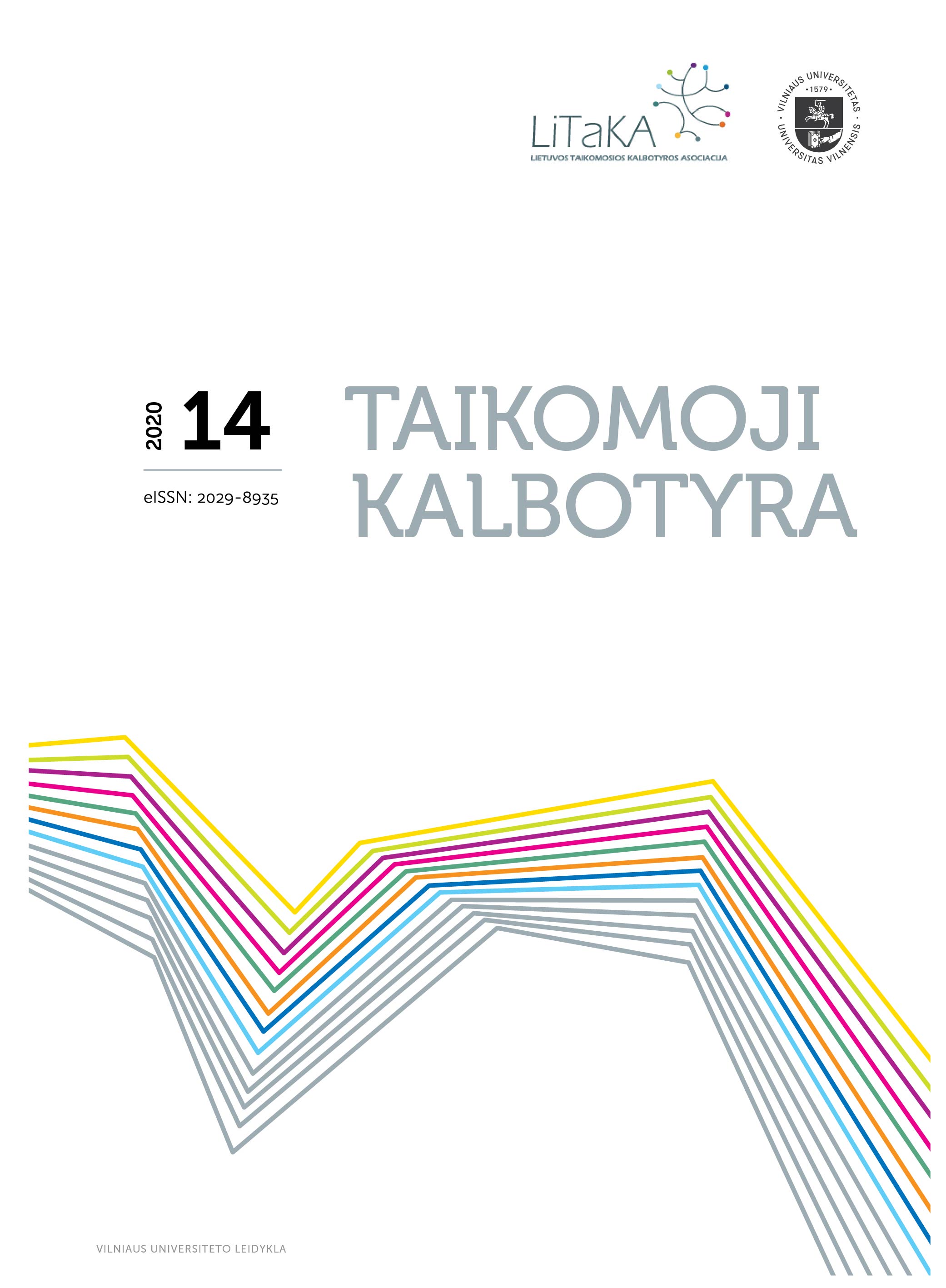Prancūzų K2 daiktavardinio junginio aktualioji skaida predikatinėje konstrukcijoje VBE rašto darbuose
Actual decomposition of the L2 French noun phrase in the predicate construction in the final written examination
Author(s): Vitalija KazlauskienėSubject(s): Language and Literature Studies, Morphology, Syntax
Published by: Vilniaus Universiteto Leidykla
Keywords: noun phrase; predicate construction; attributes;learner language;
Summary/Abstract: The noun phrase (NP), one of the key elements of a sentence, can reveal the characteristics of a learner’s linguistic competence. The present study focuses on actual decomposition of NP in the predicate construction. This is when the attribute elements of a noun phrase are included in the predicate construct as factoractualized determinants. In this position, the copula verb is merely a grammatical means of allowing the attribute to become a predicate (Gaulmyn, Basset 1991: 177).The aim of the study being a more thorough investigation of the criteria and peculiarities of producing this type of predicate constructs in learner language, the present research is based on the empirical material from the Lithuanian learner corpus. The paper briefly discusses the concept of the predicate construction and describes the process of compiling the learner corpus as well as the principles of data selection. The analysis of the NP in a predicate construction is then presented, and the characteristic cases from the corpus data are examined. The main limitation of the present study is related to the scope of the learner corpus. Having summarized the results of the quantitative and qualitative research, the following conclusions were formulated. The learner language is dominated by NP predicate constructions with an adjective more often than a noun. As to the verb conjunction, the typical attribute verb être ‘to be’ was the only one widely used in the corpus under investigation. The analysis of the corpus data also revealed a number of specific errors that are typical of the learners’ written language. In general, the predictive constructions in the learners’ language are characterized by the omission of redundancy tags in the grammatical categories of gender and number. The analysis of the learner corpus provided a broader look at the NP in a predicate construction, highlighting the simplicity, conciseness and repetition of this construct. The results of the study are important for a more comprehensive description of the learners’ language, for solving problems in foreign language analysis, and for contributing to the quality of teaching and learning the French language.
Journal: Taikomoji kalbotyra
- Issue Year: 2020
- Issue No: 14
- Page Range: 39-49
- Page Count: 11
- Language: Lithuanian

